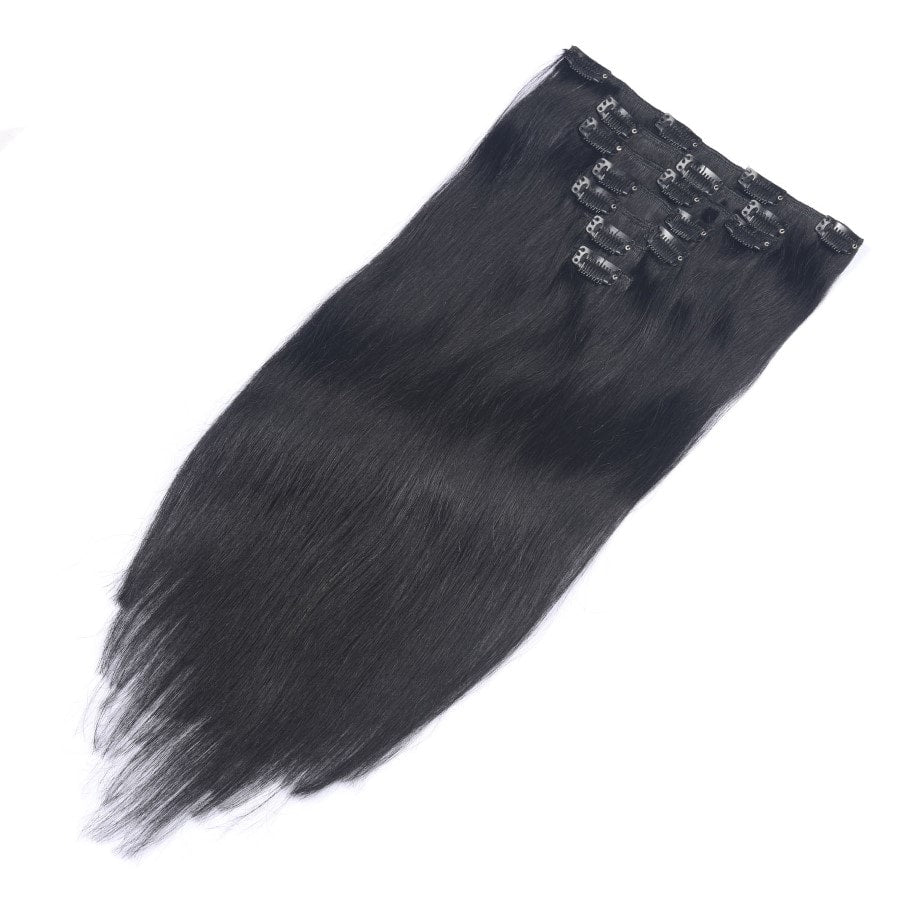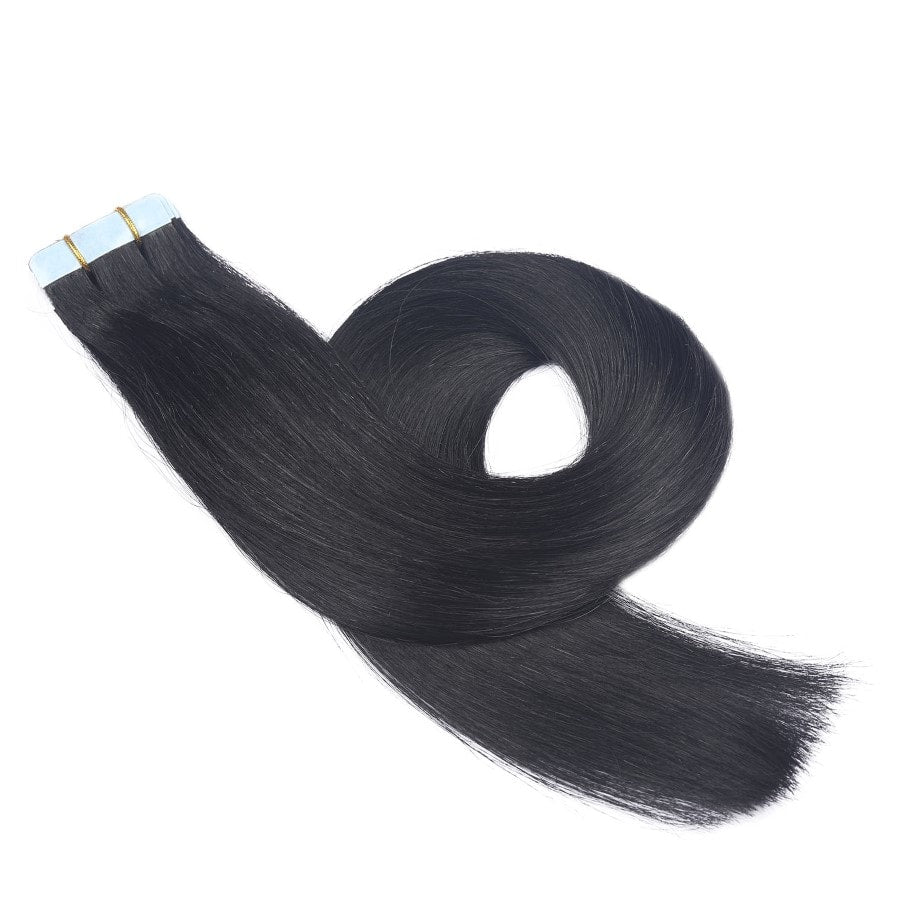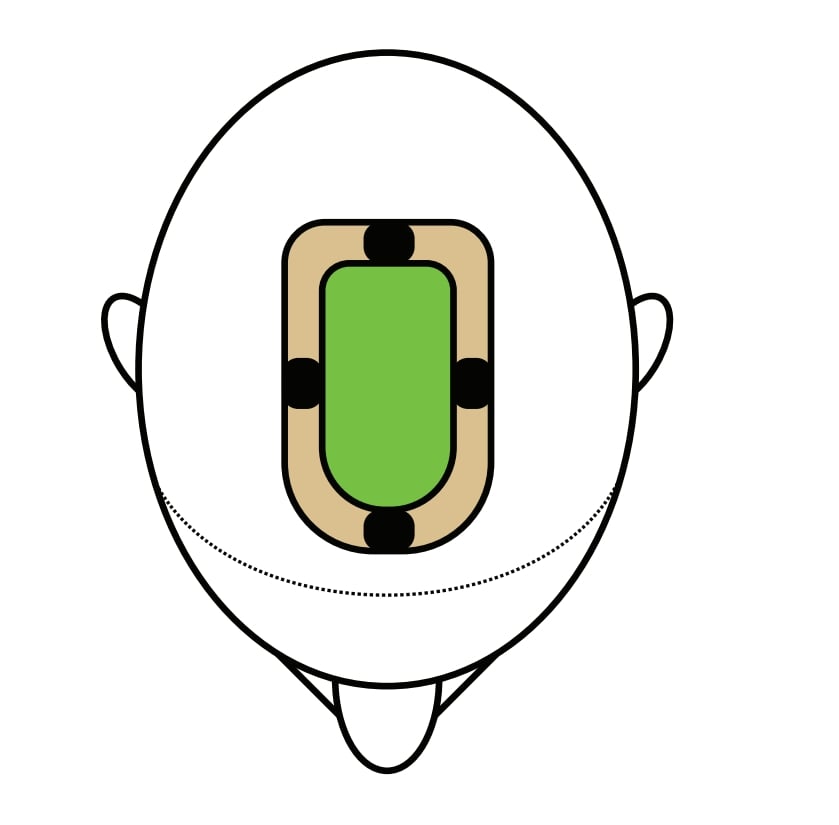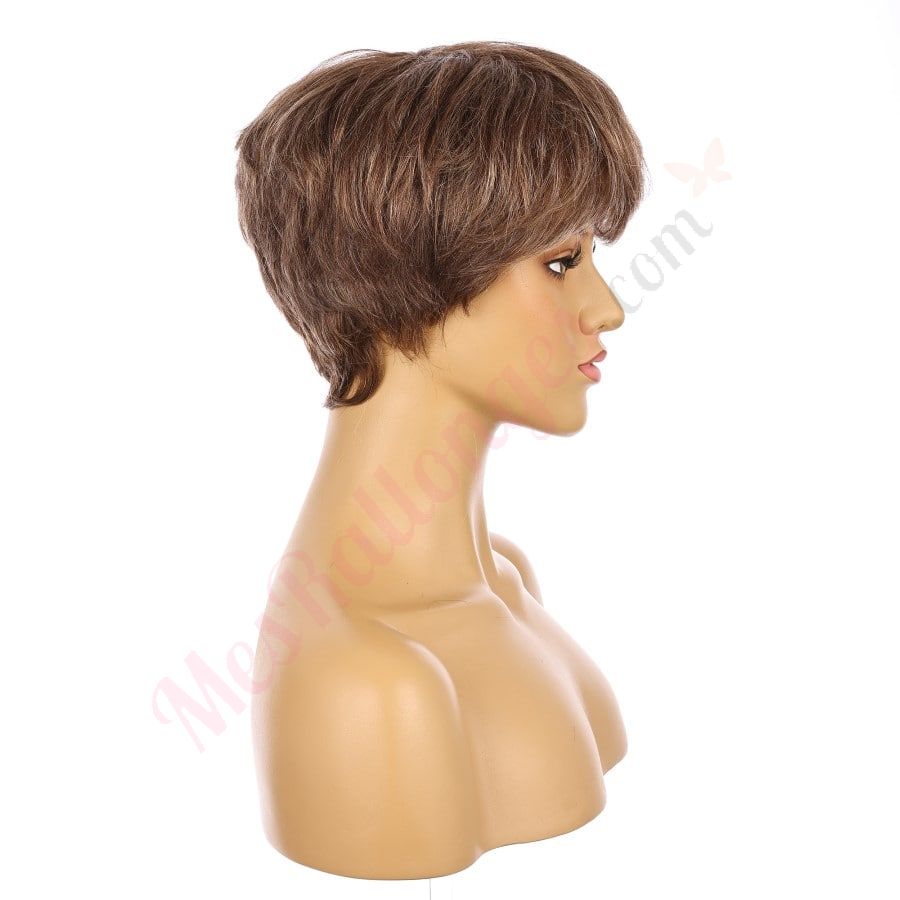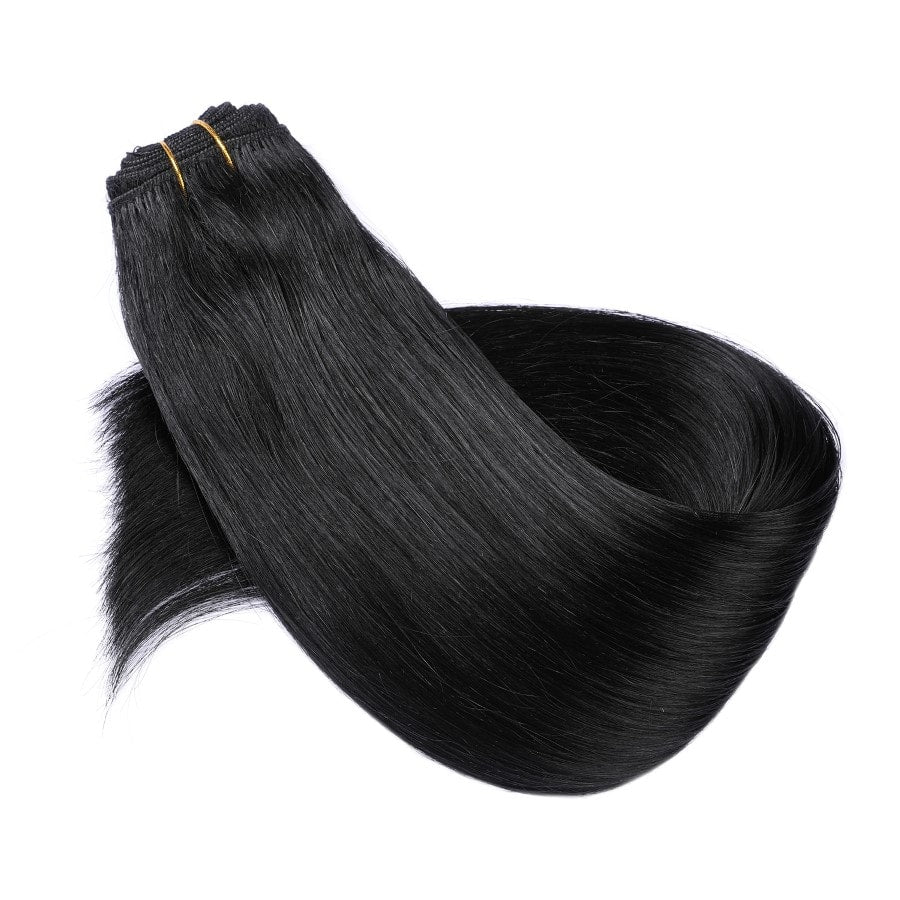Sew-in extensions have become a popular choice for enhancing our natural hair. They offer a quick and dramatic change to our look by adding length, volume, and versatility. But can sew-in extensions damage your natural hair? Yes, they can cause damage if not installed or maintained correctly.
The way sew-ins are secured to our hair can be problematic. If the braided base is too tight, it can pull on the scalp and hair follicles, leading to breakage and hair loss. It's crucial to get these extensions installed by a reputable professional to prevent such issues. Additionally, regular maintenance and proper aftercare are key to minimizing potential damage.
Before jumping into the world of sew-in extensions, we must ensure our natural hair is in good shape. Preparing our hair properly can make a significant difference in the health of both the extensions and our own hair. Let’s dive deeper into how to enjoy the benefits of sew-in extensions while keeping our natural hair safe and strong.
Key Takeaways
- Sew-in extensions can damage hair if done improperly.
- Proper installation and maintenance are crucial.
- Prepare your natural hair beforehand for best results.
Unveiling the Basics of Sew-In Extensions
Sew-in extensions are a fantastic way to add length, volume, or even a pop of color to our natural hair. In this section, we explore the definition and types of hair extensions and dive into the sew-in technique.
Definition and Types of Hair Extensions
Hair extensions come in various types and materials, giving us plenty of options to choose from. Human hair extensions are made from real hair and can be styled, washed, and treated just like our natural hair. On the other hand, synthetic hair extensions are made from synthetic fibers and are often less expensive, though they cannot be styled with heat.
Types of hair extensions include:
- Clip-ins: Quick to install and remove, perfect for temporary use.
- Tape-ins: Adhesive tape attaches the extensions to our hair, lasting several weeks.
- Sew-ins: Wefts of hair sewn into braided natural hair using a needle and thread.
The sew-in method is our focus here, as it provides a long-lasting and secure option for hair extensions.
Discovering the Sew-In Technique
To achieve a sew-in look, we start by braiding our natural hair into cornrows. These braids lay flat against our scalp, forming a secure base. Then, using a specialized needle and thread, we attach the wefts of hair (also known as weaves) to these braids.
Advantages of sew-in extensions:
- Secure hold: Since the extensions are sewn in, they stay firmly in place.
- Versatility: Available in various colors, textures, and lengths.
- Durability: Sew-ins can last from 4 to 12 weeks with proper care.
Whether we choose human or synthetic hair, sew-in extensions allow us to transform our look confidently and creatively.
Pros of Choosing Sew-In Hair Extensions
Sew-in hair extensions offer numerous benefits, making them a popular choice for anyone looking to enhance their natural hair. These extensions can add volume, provide versatile styling options, and protect our natural tresses.
Enhancing Volume and Length Seamlessly
Sew-in extensions can instantly transform our hair, adding both volume and length. This is perfect for those who struggle with thin, flat hair or who want a more dramatic look. Instant volume and thicker tresses can make a huge difference in our overall appearance.
The extensions blend seamlessly with our natural hair, making them almost invisible. This seamless integration ensures that our hair looks natural and voluminous without any noticeable differences.
Styling Versatility: Curly to Straight and Beyond
One of the greatest benefits of sew-in extensions is the versatility they offer. We can easily switch from curly to straight hair, change colors, or try new styles without damaging our natural hair. These extensions allow us to experiment with different textures and styles to find the perfect look for any occasion.
With sew-in extensions, we have the freedom to change our hair as often as we’d like. This flexibility means we can keep up with current trends and express our individuality through various hairstyles.
Longevity and Protection for Your Natural Tresses
Sew-in extensions are semi-permanent, lasting from 4 to 12 weeks, depending on how well we take care of them. This longevity provides continuous styling options without frequent replacement, saving us both time and effort.
Moreover, sew-ins can offer protection for our natural hair. By acting as a barrier, they can help reduce daily wear and tear, promoting healthier growth. This protective layer ensures that while we enjoy fuller, longer hair, our natural tresses remain safe and well-maintained.
Potential Cons to Keep in Mind
When thinking about sew-in extensions, it’s important for us to be aware of the potential downsides like hair tension, maintenance, and cost. Knowing these factors can help us make the best decision.
Tension and Traction: Risk of Hair Damage
One of the biggest concerns with sew-in extensions is the tension they put on our natural hair. The process involves tightly braiding our hair and sewing the extensions onto these braids. This can lead to breakage and even traction alopecia in some cases.
Traction alopecia is hair loss caused by the constant pulling and tension on our hair follicles. We need to be careful about how tight our braids are and avoid keeping the sew-ins for too long to minimize these risks. Frequent monitoring and loosening can help prevent significant damage.
Maintenance and Upkeep Concerns
Maintaining sew-in extensions requires regular care. We must regularly wash and condition our extensions to keep them clean and healthy. Improper maintenance can lead to build-up and even fungus growth, which can affect both the extensions and our natural hair.
Regular visits to the salon for tightening and adjustments are also crucial. Neglecting these maintenance routines can lead to tangling and matting, making it difficult to manage our hair and reducing the overall lifespan of the extensions.
Cost and Commitment Considerations
Sew-in extensions are not just a one-time expense; they involve both initial and ongoing costs. The initial installation can be pricey, and regular salon visits for upkeep add to the total cost. The prices can vary based on the type and quality of hair used, as well as the expertise of the stylist.
We should also consider the time commitment. Installing and removing sew-ins can take several hours, and the regular maintenance visits to the salon also consume time. For some of us, this ongoing commitment might be too demanding.
All these factors combined make sew-ins a significant investment—both in terms of money and time. Are we ready for that level of dedication to our hair care routine? Let’s weigh the pros and cons closely.
Essential Pre-Installation Considerations
To ensure your sew-in extensions look great and keep your natural hair healthy, we must focus on assessing scalp and hair health, picking the right hair extensions, and preparing correctly.
Assessing Your Scalp and Hair Health
Before getting sew-in extensions, it’s crucial to examine our scalp and hair. Healthy hair and scalp are less likely to suffer from damage.
First, check for any scalp conditions like dryness or dandruff. If we notice any issues, it's wise to address them before installation.
Next, evaluate our natural hair. Is it strong and free of breakage? Weak or damaged hair can break under the weight of the extensions. Let’s consider consulting a hairstylist to ensure our hair can handle the extensions.
Remember: a strong foundation is key to beautiful, lasting extensions!
Choosing the Right Hair Extensions
Selecting the right type of hair extensions is essential for achieving a natural look and avoiding potential damage.
Quality Matters: Choose high-quality hair extensions made from real human hair or premium synthetic fibers. Low-quality extensions can cause tangling and breakage.
Match Your Hair Type: Ensure the extensions match our natural hair texture and color. This makes the extensions blend seamlessly and reduces the need for excessive styling.
Talk with a Pro: A consultation with a hairstylist can help us choose the best type of extensions. They can provide recommendations based on our hair’s specific needs and our desired look.
Preparing for the Big Day: What to Do Before Sew-In
Proper preparation makes the installation process smoother and helps maintain the health of our natural hair.
Wash and Condition: Clean hair is a must before getting extensions. Use a gentle shampoo and a deep conditioner to nourish our hair.
Detangle: Remove any knots and tangles. This prevents discomfort and makes the installation process faster.
Trim Split Ends: If we have any split ends, trimming them can prevent further damage while wearing the extensions.
Moisturize: Hydrated hair and scalp are less prone to dryness and irritation. Apply a leave-in conditioner or oil to lock in moisture.
Taking these steps ensures we’re ready for beautiful sew-in extensions without compromising the health of our natural hair.
The Installation Process: Creating Your New Look

Transforming your natural hair with sew-in extensions involves creating strong cornrows, sewing in the wefts securely, and blending for a natural look.
Crafting the Perfect Foundation: Cornrows and Braiding
First, we start with cornrows. This is the base for our sew-in extensions. It's important to braid our hair neatly and tightly. We usually part our hair into small sections and create rows of braids.
A good braid foundation helps to keep the extensions secure. Professional stylists often recommend using a bit of gel or edge control to keep the braids neat. Remember, the tighter and more even the braids, the better the sew-in will look and last.
Attaching the Wefts: Sewing in Your New Style
After we've braided our hair, it's time to sew in the wefts. We use a special needle and thread to do this. The needle is curved to make stitching easier. We start at one end of the braid line and carefully sew the weft onto the braid.
This keeps the wefts close to the scalp, making the extensions look natural. It's important to ensure that the thread is tightly secured but not too tight to avoid discomfort or damage. Professional sew-in installations usually last longer because the stylist can ensure every stitch is perfect.
Final Touches: Blending and Styling
Once the wefts are in place, we focus on blending and styling. Blending means making sure that the extensions mix seamlessly with our natural hair. This might involve trimming the extensions or using a bit of heat styling to match textures.
Adding layers can help too. For styling, we can curl, straighten, or even color the extensions just like our natural hair. A light leave-in conditioner or styling cream can help keep everything looking smooth and polished. By the end of this process, our hair should look full, natural, and ready to show off!
Aftercare: Prolonging the Life of Your Sew-In Extensions

Taking care of your sew-in extensions ensures they remain beautiful and long-lasting. Our guide covers essential practices for washing, conditioning, daily maintenance, and professional touch-ups that keep extensions in prime condition.
Washing and Conditioning: Best Practices
We recommend using a sulfate-free shampoo to cleanse our hair extensions. Sulfates can strip natural oils and cause dryness. When washing, gently massage the shampoo into the extensions, avoiding excessive twisting or rubbing.
After rinsing with lukewarm water, apply a moisturizing conditioner. Focus on the ends where dryness often occurs. Leave the conditioner in for a few minutes before rinsing thoroughly. Avoid heavy products that can weigh down the hair wefts.
Once clean, gently squeeze out excess water and use a microfiber towel to dry. Be sure to avoid wringing the hair. This method keeps our extensions looking fresh and shiny.
Sleeping and Daily Maintenance Tips
Protecting our extensions while we sleep is crucial. We should use a satin pillowcase or hair cap to reduce friction. This helps prevent tangles and matting.
During the day, brushing is essential. Started from the ends and worked upward, we softly brush our extensions to remove tangles. A detangling brush is ideal for this. Be gentle around the rooted area to avoid loosening the wefts.
Oil treatments can add moisture and shine. Apply a lightweight oil sparingly, focusing on the ends. Too much can make the hair greasy and attract dirt. Regular detangling and proper moisturizing keep our extensions looking fabulous.
Regular Salon Visits for Health and Longevity
Routine salon visits are important for maintaining our sew-in extensions. Professionals can ensure extensions are properly adjusted as our natural hair grows. Regular touch-ups help prevent damage and ensure the extensions remain secure.
Our stylist can also check for any signs of damage or stress on our natural hair. If extensions grow out too far from the scalp, they can cause tension. It's best to remove and reinstall them periodically.
Professional treatments, like deep conditioning, can rejuvenate both our extensions and natural hair. Scheduling these visits every few weeks keeps everything looking and feeling great.
Potential Risks and How to Minimize Them
Sew-in extensions can be fantastic for adding length and volume, but they come with some risks. Understanding these risks and how to prevent them is key to maintaining our natural hair health.
Preventing Traction Alopecia and Breakage
One of the main risks with sew-in extensions is traction alopecia. This happens when the extensions are sewn in too tightly, causing tension on our hair and scalp.
We can prevent this by ensuring our stylist doesn't pull our hair too tightly during installation. Proper installation is crucial. If we feel discomfort or irritation, it's essential to speak up immediately.
Breakage is another concern. We can minimize breakage by taking a break between sew-ins to allow our natural hair to recover. During this time, we should focus on moisturizing and conditioning our hair.
Avoiding Product Buildup and Bacteria
Product buildup can cause our sew-in extensions to look dull and may lead to scalp issues. To avoid this, we should use lightweight products and avoid heavy oils and creams.
Washing our hair regularly but not too frequently is important. This helps keep our scalp clean without stripping it of necessary oils.
Bacteria can also be a problem. We should dry our hair thoroughly after washing to prevent bacteria growth. Additionally, it’s crucial to clean our hair tools regularly to avoid transferring bacteria to our hair and scalp.
By being mindful of these practices, we can enjoy the benefits of sew-in extensions while minimizing potential risks.
Sew-In Removal and Natural Hair Recovery
Taking out sew-in extensions and giving our natural hair the care it needs afterward is crucial. We should focus on safe removal, post-removal treatments, and knowing when to give our hair a break.
The Safe Way to Say Goodbye to Extensions
Removing sew-in extensions the right way is key to avoiding damage. We need to gently cut the threads with sharp scissors, being extra careful not to cut our natural hair.
After we have cut all the threads, the wefts of hair should lift off easily. It's best to go slowly and take our time to ensure we don't pull or tug at the hair.
Treating Your Hair Post-Extension Removal
Once the extensions are out, our natural hair will need some tender loving care. We should start with a deep conditioning treatment to restore moisture and softness to our hair.
Using a leave-in conditioner can help nourish the hair follicles and make detangling easier. It's also a good idea to reduce the use of styling tools to prevent further stress on our hair.
When to Consider a Break from Extensions
Sometimes, giving our hair a rest is necessary to promote healthy growth. We should watch for signs like breakage, thinning, or discomfort in our scalp.
If we notice these issues, it might be time to avoid extensions for a while and focus on natural hair care treatments. Regular trims and using protective styles that don't add tension to the hair can aid in recovery.
Embracing the World of Sew-In Extensions
Sew-in hair extensions open up a world of styling possibilities! They add instant volume, thickness, and length to our natural hair, creating exciting transformations. With sew-ins, we can switch between various styles, colors, and textures effortlessly.
One of the best parts is their semi-permanent nature. Sew-in extensions last for weeks, sometimes even months. This means we don’t need to worry about frequent touch-ups. Plus, they blend seamlessly with our natural hair, making them almost invisible.
The versatility of sew-in extensions allows us to experiment with different looks. From straight and sleek to curly and voluminous, there's a style for every occasion. We can also play with bold colors without committing to permanent dyes.
Here are a few points to remember for maintaining our sew-in extensions:
- Brushing: Use a detangling brush and start from the ends, working your way up.
- Washing: Be gentle and use sulfate-free shampoos to keep the extensions in top condition.
- Styling Tools: Limit the use of heat styling tools to prevent damage.
With these extensions, every day is a chance for a new look. The excitement of changing styles, textures, and colors keeps our hair routine fresh and fun. Embrace the versatility and transformation sew-in extensions offer, and let's enjoy every moment of this hair adventure!
Conclusion
We’ve explored the ins and outs of sew-in hair extensions and their potential impact on our natural hair. It's clear that sew-ins offer many benefits like added volume, length, and versatility.
To make the best decision, we must weigh these benefits against the potential risks. Proper installation and maintenance are key to minimizing damage to our natural hair.
With the right care, sew-in extensions can be a fantastic addition to our beauty routine. Professional application and choosing high-quality extensions help ensure our natural hair stays healthy.
Let's remember that gentle handling and regular upkeep are crucial. Being mindful of these factors allows us to enjoy the perks of sew-in extensions without compromising our natural hair's health.
Together, we can enjoy beautiful, full hair with sew-in extensions while keeping our natural hair in great shape!
Frequently Asked Questions
We're diving into the most common concerns about sew-in extensions. From preventing damage to keeping your hair healthy, we've got you covered with practical tips and advice.
How can I prevent damage to my natural hair when wearing sew-in extensions?
To prevent damage, it's important to prep your natural hair before getting sew-in extensions. Deep conditioning treatments and ensuring your hair is well moisturized can make a big difference. Also, make sure to visit a professional stylist who knows how to properly install and care for the extensions.
What's the maximum time I should keep my sew-in extensions in to avoid damage?
Keeping sew-in extensions in for too long can cause hair breakage. We recommend wearing them for no longer than 6-8 weeks. This gives your natural hair time to breathe and reduces the risk of potential damage from prolonged wear.
Are there healthier alternatives to sew-in extensions for enhancing hair volume?
Yes, there are several alternatives that might be gentler on your hair. Clip-in extensions, tape-ins, and halo extensions are great options that provide volume without the same level of tension or potential damage as sew-ins.
What methods can I use to thicken my hair after removing extensions?
Once you've removed your extensions, focus on nourishing your natural hair. Products like biotin supplements, hair growth oils, and regular scalp massages can help promote hair thickness. Don't forget to be gentle with your hair and avoid excessive heat styling.
Does wearing hair extensions stop my natural hair from growing?
No, wearing extensions doesn’t stop your hair from growing. However, improper installation or care can lead to breakage, which might make it seem like your hair isn't growing. Proper maintenance and occasional breaks from extensions are key to keeping your hair healthy.
What are the potential side effects of having permanent hair extensions?
Permanent extensions can lead to issues such as scalp irritation, hair breakage, and traction alopecia if not installed or maintained correctly. Always make sure to give your scalp some rest between sets and see a professional for both installation and removal.


